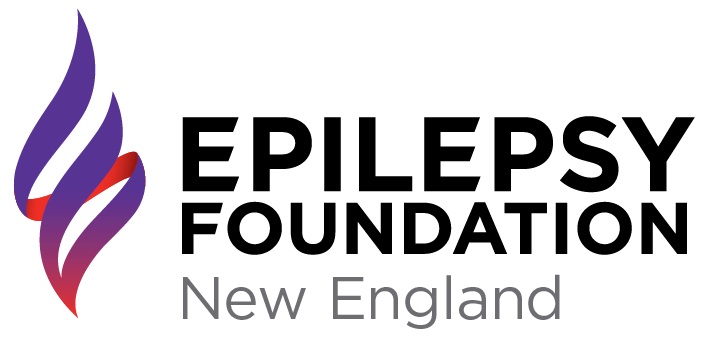Types Of Seizures
Generalized Non-Motor - Absence Seizures
An absence seizure is a Generalized Onset Non-Motor Seizure. An absence seizure causes a short period of “blanking out” or staring into space, and are usually so brief that they frequently escape notice. Like other kinds of seizures, they are caused by abnormal activity in a person’s brain. You may also hear people call absence seizures petit mal (“PUH-tee mahl”) seizures, although that name is not common anymore.
How Many Types of Generalized Non-Motor Absence Seizures Are There?
There are two types of absence seizures:
Typical absence seizures: During a typical absence seizure, there is a very brief, usually less than 10 second, interruption of ongoing activities. This may be recognized as be a person staring off into or possibly a brief upward deviation of the eyes. Because they happen so quickly, it’s very easy not to notice simple absence seizures — or to confuse them with daydreaming or not paying attention.
Atypical absence seizures: During an atypical absence seizure, a person will experience a change in muscle tone which or make some kind of movement in addition to staring into space. Movements may include blinking, chewing, or hand gestures. An atypical absence seizure may last up to 20 seconds.
Who’s at risk for Generalized Non-Motor Absence Seizures?
Absence seizures are most common in children ages 4 to 14. However, older teens and adults may also have absence seizures.
What is it like to have a Generalized Non-Motor Absence Seizures?
When people have absence seizures, they are not aware of what is happening around them. For example, they will not notice if someone tries to speak to them while they are having an absence seizure. Often if a person is speaking when their seizure begins, the person they are speaking to will notice that they have stopped talking in the middle of a sentence.
Some people have absence seizures for many months or years before they recognize there is a problem. It’s very common for everyone to mistake absence seizures for daydreaming or not paying attention. Absence seizures are most likely to affect children, and it’s common for children not to pay attention for short periods of time — for example, at school. In fact, the first clue a parent might have that a child is having absence seizures is that the child is having trouble in school.
What happens after a Generalized Non-Motor Absence Seizure?
When an absence seizure ends, the person usually continues doing whatever they were doing before the seizure began. They are almost always wide awake and able to think clearly. Generally, no first aid is needed because of the seizure.
If someone has Generalized Non-Motor Absence Seizures, how often will they happen?
The number of absence seizures a person may experience varies widely. Some people may have seizures very infrequently or not at all if their seizures are well controlled on medication. Other people may experience 100’s of brief absence seizures a day.
How can I tell if someone is having a Generalized Non-Motor Absence Seizure?
A lot of the time, you can’t. That’s the tricky thing about absence seizures: Often, they come and go so quickly that no one notices anything unusual — and that includes the person who had the seizure! It’s very common for everyone to mistake absence seizures for daydreaming or not paying attention.
During an atypical absence seizure, people may:
- Blink over and over so it looks like they’re fluttering their eyelids
- Smack their lips
- Make chewing motions with their mouths
- Rub their fingers together
- Move their hands
How are Generalized Non-Motor Absence Seizures diagnosed?
Your doctor will listen to your description of the events you have noticed and if they are concerned about seizures they will order a test, called an EEG (electroencephalogram), to check the brain for electrical activity that can cause seizures.
How are Generalized Non-Motor Absence Seizures treated?
There are medicines that can help prevent absence seizures. And it is also possible that absence seizures will go away on their own. In fact, 7 out of 10 kids with absence seizures will stop having them by age 18. Children who start having absence seizures before age 9 are much more likely to outgrow them than children whose absence seizures start after age 10.
What should I do if I think my child may have Generalized Non-Motor Absence Seizures?
If you think your child may be having absence seizures, talk to your child’s doctor about your concerns right away. Absence seizures may be confused with other types of seizures. That’s another reason why it’s so important that your child see a doctor for a correct diagnosis.
Kids who have absence seizures aren’t usually in danger during a seizure. However, absence seizures may cause your child to:
- Have trouble learning at school
- Have social problems
- Misbehave more often
Absence seizures or daydreaming?
If you’re wondering whether your child is daydreaming or having absence seizures, here are a few key differences to look for:
Daydreaming:
- Is likely to happen when your child is bored (for example, during a long class period at school)
- Usually comes on slowly
- Can be interrupted
- Tends to continue until something stops it (for example, the teacher or a friend, or parent getting the child’s attention)
Absence seizures:
- Can happen anytime, including during physical activity
- Usually come on very suddenly, without warning
- Cannot be interrupted
- End on their own, typically within 10-20 seconds

The Epilepsy Foundation New England is here to serve and assist the epilepsy community. We partner with the Epilepsy Foundation of America to provide access to information, resources, and support for our constituents.
